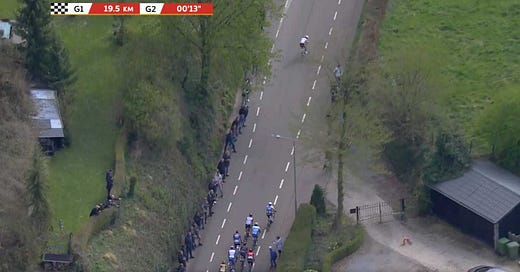Ten Takeaways: What We Learned at Amstel Gold & Itzulia Basque Country
Breaking down another wild finish at Amstel Gold & Dani Martinez's surprising performance at Basque Country
The past weekend saw Ineos return to the top of the cycling world with Michal Kwiokoski’s win at the one-day Amstel Gold race and Dani Martinez’s overall victory at the week-long Itzulia Basque Country. Kwiatkowski’s Amstel win marked more finish-line drama at the seasons’ biggest one-day Dutch race, as eventual runner-up Benoît Cosnefroy was originally…
Keep reading with a 7-day free trial
Subscribe to Beyond the Peloton to keep reading this post and get 7 days of free access to the full post archives.



